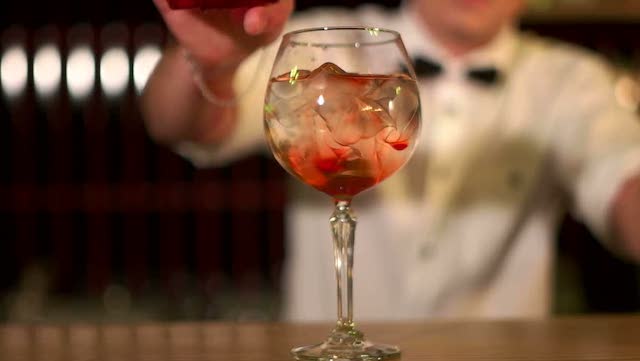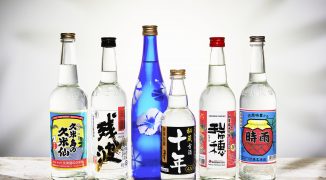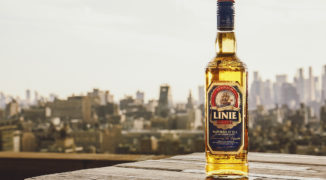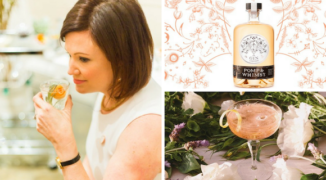Bartenders looking to add depth and sweetness to cocktails are increasingly turning to liqueurs to customize and enhance flavor profiles.
The practice fell out of habit around the mid-century, according to Michael Cadden, lead bartender at Heartwood Provisions in Seattle. “After the Depression and World War II, a lot of European liqueurs were no longer served in the United States. Americans started making our own syrups and sweeteners with a business mindset that eventually led to corn-based syrups with added coloring and artificial flavoring…to make it look like the picture on the bottle,” explains Cadden. “Today, luckily for us, bartenders demand better products, and the flow of traditional European liqueurs into the country has resumed. Liqueurs produced in the States also come from actual fruit now, as well.”
Classic cocktails offer a good jumping off point for bartenders looking to experiment with simple syrup substitutions.
“Look at something like a classic daiquiri,” says Caroline McLean, bartender at Saturn Bar in Birmingham, Alabama. “There are only three ingredients there, so replacing the simple syrup is an easy way to customize the drink and also add a more complex sweetness.” Adding a liqueur to a classic cocktail — for example, substituting the simple syrup in a daiquiri for crème de violette — allows for common ingredients to interact in unexpected ways.
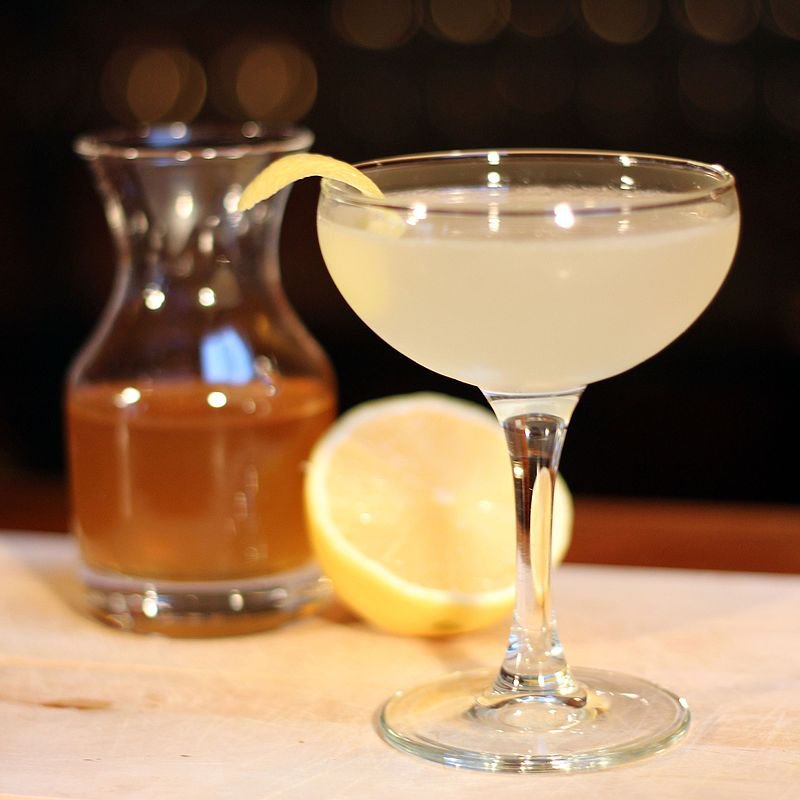 Bartender McLean adds a German honey liqueur to her Bee’s Knees cocktail instead of the expected honey simple syrup.
Bartender McLean adds a German honey liqueur to her Bee’s Knees cocktail instead of the expected honey simple syrup.
“When I worked at Tavern Law in their hidden speakeasy, we made custom cocktails for each and every customer,” says Cadden. “We used liqueurs as a modifier. Cocktails would be similar, but each would have a unique element from the different liqueurs.”
Both bartenders look to Prohibition Era cocktails for inspiration; Cadden integrates Bärenjäger honey liqueur into his riff on the classic Penicillin cocktail, with additional depth coming from Domaine de Canton instead of a ginger simple syrup, while McLean adds Bärenjäger in place of a honey simple syrup in her Bee’s Knees recipe. “I would always have a bottle of Bärenjäger behind my bar,” McLean adds. “It’s like Cherry Heering — a very specific flavor that I love working with.”
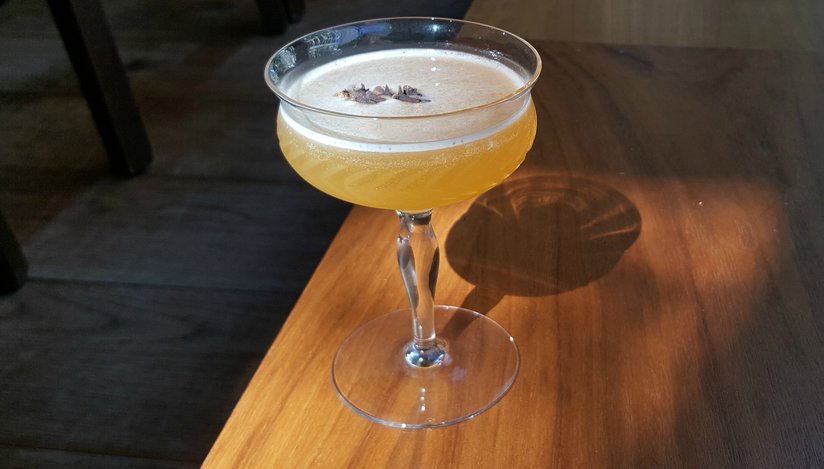 Bartender Cadden adds two different liqueurs (Bärenjäger and Domaine de Canton) to the Penicillin cocktail instead of the usual simple syrups.
Bartender Cadden adds two different liqueurs (Bärenjäger and Domaine de Canton) to the Penicillin cocktail instead of the usual simple syrups.
At the Bavarian restaurant and bar Nürnberger Bierhaus in Staten Island, owner and bartender Robert Kelly also keeps his bottle of the honey liqueur nearby. “We use Bärenjäger in almost any cocktail that calls for simple syrup or a sweetener of some sort…Old Fashioned’s, Mojitos, and Mint Juleps,” Kelly says.
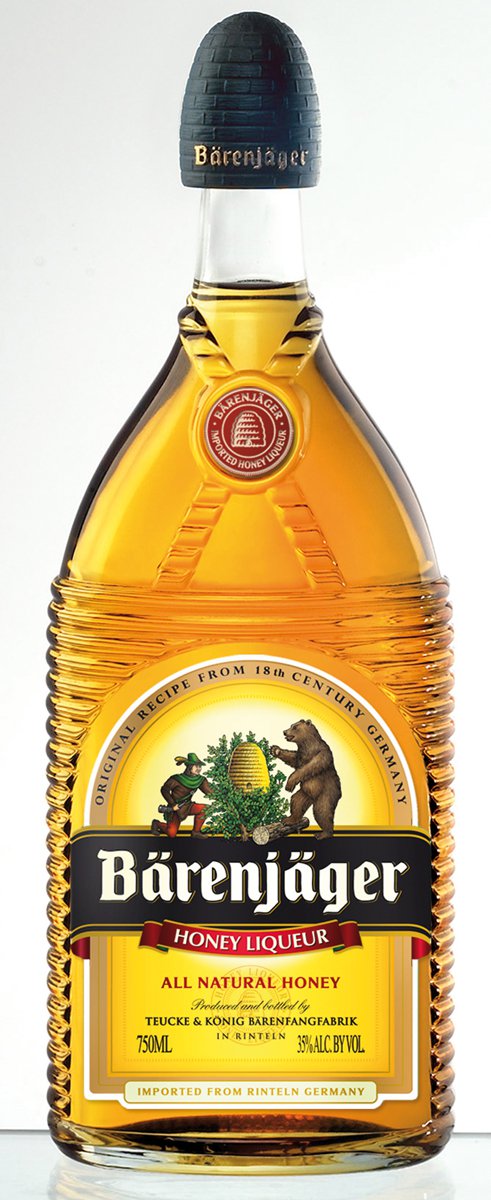 “We also use Bärenjäger to mead-ify white wine,” he explains. “Any white wine; you just coat the wine glass with Bärenjäger and let the honey cover the glass. Then, pour in the wine. It’s the best mead you will ever have.”
“We also use Bärenjäger to mead-ify white wine,” he explains. “Any white wine; you just coat the wine glass with Bärenjäger and let the honey cover the glass. Then, pour in the wine. It’s the best mead you will ever have.”
The opportunities for liqueur modifications are endless, particularly given the upsurge in regionally produced infused spirits. Recently, Cadden has been using a local cranberry liqueur by Clear Creek Distillery in his variation on a whiskey sour he calls Under the Mistletoe. “Adding these liqueurs can have a dramatic change,” Cadden says. “I’ve also been using a local shiso liqueur produced by Sidetrack Distillery for a spirit-forward holiday cocktail we’re currently serving at Heartwood Provisions.”
Whether it’s from a just-opened micro distillery or a traditional European producer with hundreds of years of history in spirit-making, mixing liqueurs into cocktails offers opportunities for unexpected flavors. So rather than reaching for simple syrup next time, consider the range of liqueurs out there that add not just sweetness, but a little something extra.
Penicillin
- 1.5 oz Scotch
- .5 oz Bärenjäger honey liqueur
- .5 oz Domaine de Canton
- .75 oz fresh lemon juice
Directions: Shaken and served up in a coupe
Under the Mistletoe
- 1.5 oz whisk(e)y or brandy
- .5 oz Clear Creek cranberry liqueur
- .5 oz. cinnamon maple syrup
- .75 lemon juice
- 1 egg white
Directions: Shake dry, add ice, strain, and serve up.
Bee’s Knees
- 2 oz dry gin
- ¾ oz Bärenjäger honey liqueur
- ¾ oz fresh lemon juice
- dash of orange blossom water or orange bitters
- garnish with orange peel
Directions: Shake with ice, strain, serve in chilled coupe.
Good Medicine
- 1.75 oz Toki Japanese Whisky
- .5 oz. Carpano Bianco Vermouth
- .25 oz Shiso Liqueur
- .25 oz turmeric Syrup
Directions: Stirred and served on the rocks with a Shiso leaf.


